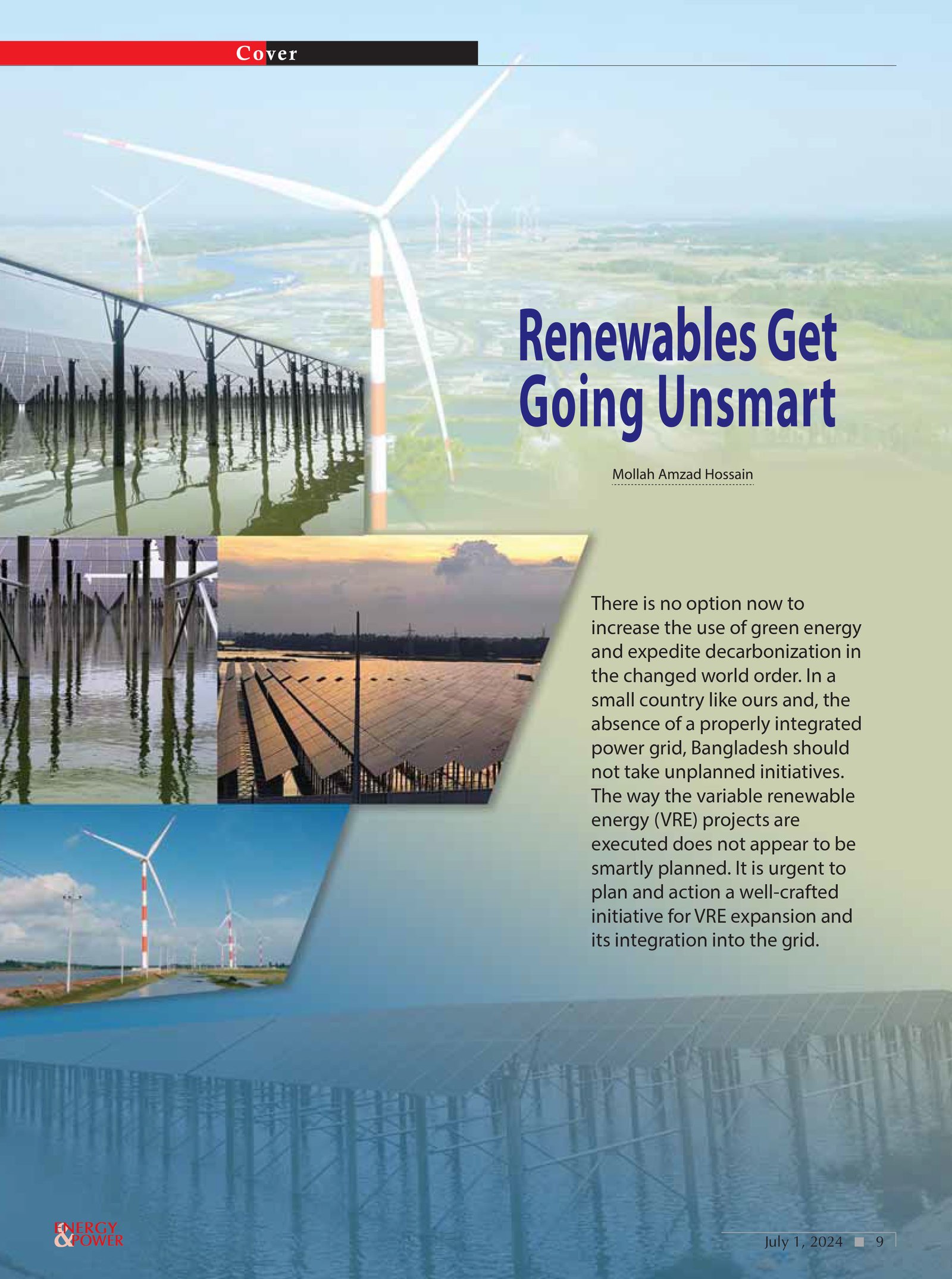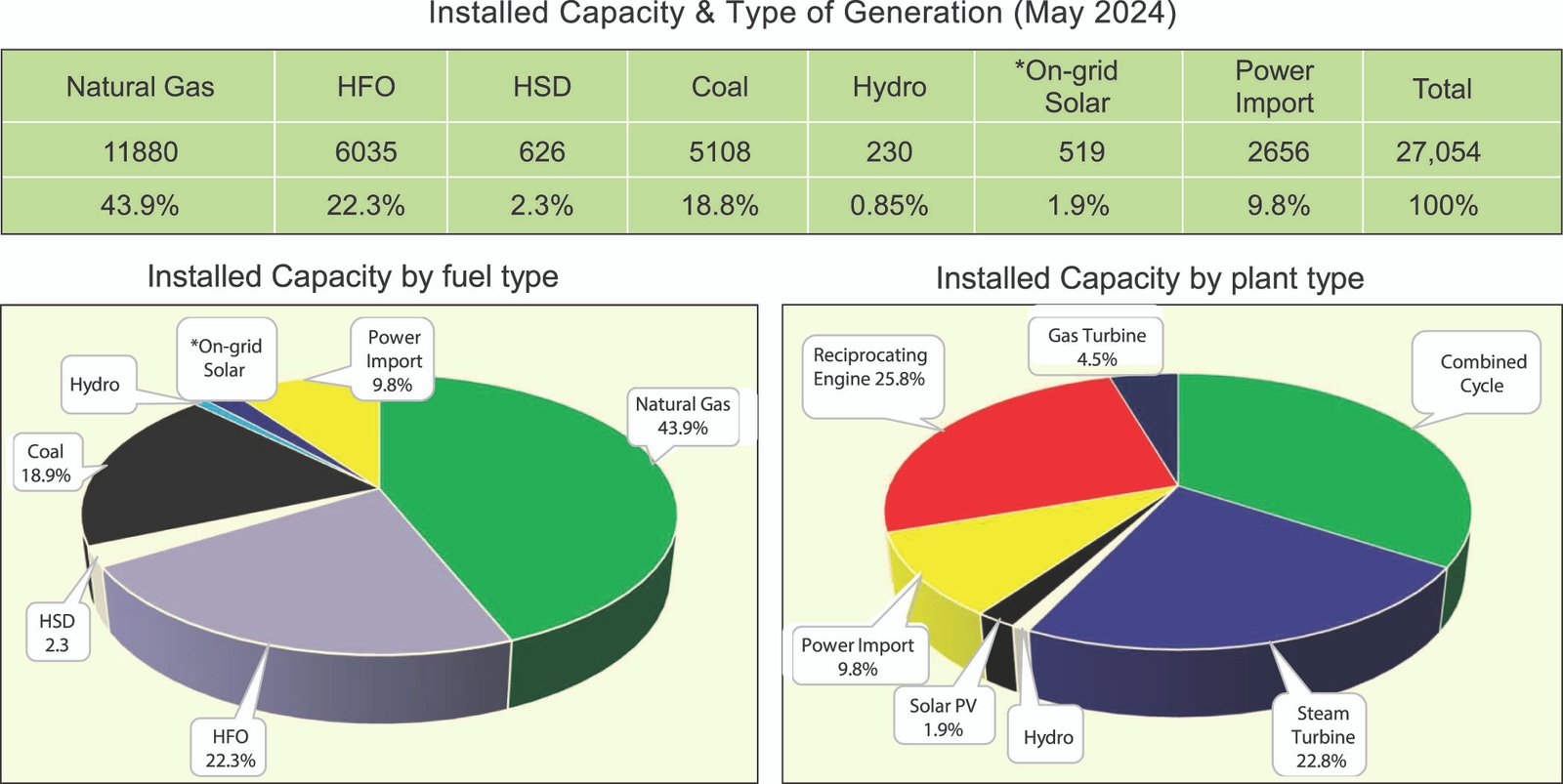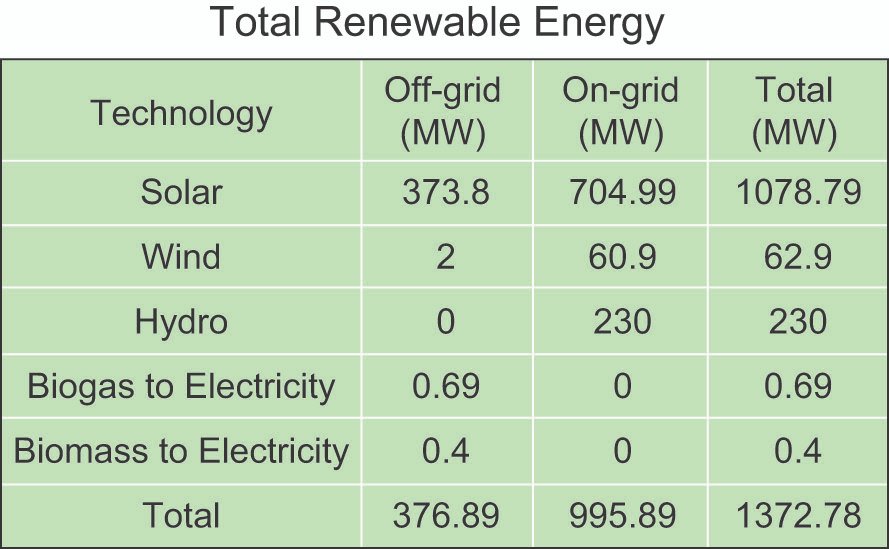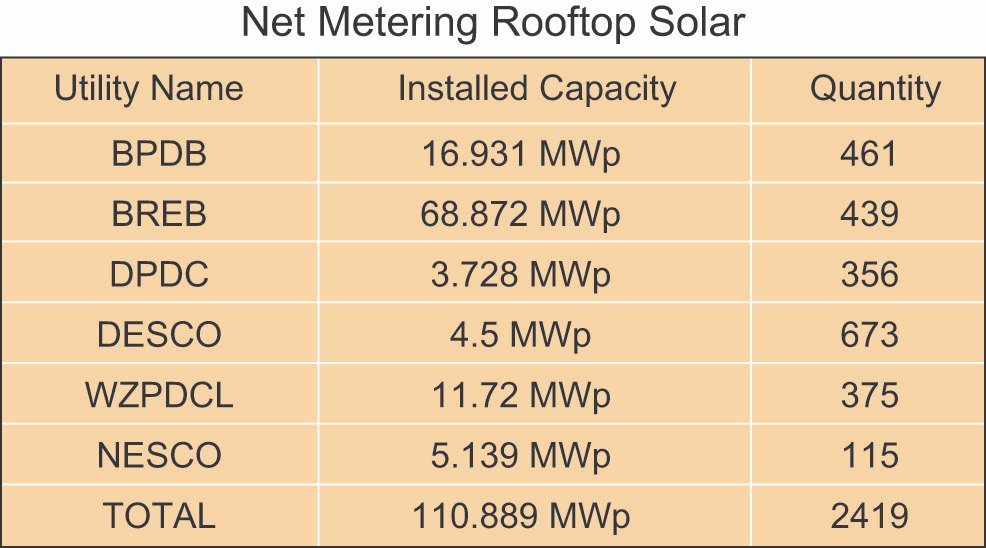
Bangladesh has joined the global mission for decarbonization of the power sector. Though the initiative has been launched over a decade and a half ago, the success is not mentionable yet. However, Bangladesh was the global leader in non-grid power supply through Solar Home Systems (SHSs). Bangladesh is a trendsetter, but its SHS program got stuck due to the massive power grid expansion across the country. Many countries are benefitting by replicating the SHS model. The government-set renewable energy targets could not be achieved earlier. However, the government has taken a multi-faceted initiative to increase the contribution of RE to the energy mix. The contribution of hydro, rooftop solar, grid solar, and wind power together is now around 1,000MW out of the total grid-connected capacity of 27,054MW. Environmentalists and civil society are not yet satisfied though. At COP26, Prime Minister Sheikh Hasina announced her vision for a 40% contribution of renewables to the energy mix by 2041. The Power Division mentioned the vision in the IPEMP 2023. Wind, solar, hydro, and nuclear electricity, and cross-border clean energy trading have been included in the plan. Power generation from green hydrogen and ammonia are also taken into consideration. The government claims that it is working on the target.

Meghnaghat 718 MW CCPP of Jera waiting for commercial operation since last April
Globally, 75% of global emissions originate from fossil fuels. A study by the International Energy Agency (IEA) evidences that 86% of energy came from fossil fuels in 1995, and in 2023, it reduced marginally by 4.5% in 28 years to 81.5%. A global target has been announced to ensure net zero emissions by 2050. However, the concerns over achieving the target have intensified by now as a very soft declaration for getting rid of fossil fuels has been announced at COP28 without any direction as to when and how the fossil fuels will be phasing out. It has been claimed in the IEA study that US$2.0 trillion has been invested in 2023 for environment-friendly power generation. It has also been mentioned that this investment needs to be doubled over the next few years to achieve net zero targets. The world community at COP28 reached a unanimous declaration to triple the use of renewables and double the energy efficiency levels by 2030 from the present level.
In Bangladesh, green energy was only 230MW or 4.6 percent of the country’s total installed generation capacity of 5,000MW in 2009. It entirely came from the country’s lone hydroelectricity plant at Kaptai. Over the last 15 years, the overall capacity of grid-connected generation has increased to 27,054MW, but the contribution of green energy (solar, wind, and hydroelectricity) is only 3%. Another 40MW hydropower will be added from the cross-border trading by the end of this year. 11 plants of solar and wind together now have a capacity of 521MW. A 62MW capacity solar power plant at Sirajganj has started generation from the last day of June 2024. Another 75MW solar power plant at Feni is waiting to feed the grid. Besides, 47 more public and private sector solar and wind power plants with a total capacity of 3,749MW are under construction while 75 others are under the approval process. The total capacity of these solar, wind, and biomass plants would be 8,738MW. Bangladesh will achieve more than the globally announced target for 2030 if all the under-construction and planned RE projects are completed.

Bangladesh recorded the highest generation of 16,477MW on 30 April 2024. It was a little over 60% of installed capacity. Despite possessing a huge reserve margin, the systems could not generate more than that for fuel supply shortage, failure to pay for electricity purchased from the generation companies and dollar crisis. Consequently, the entire country is in the grip of massive power load-shedding. The crisis is very acute in the rural areas. Generation is affected by 30-40% as the PBSs of BREB cannot meet the demand. Green energy lobbyists and environment activists claim that investing in solar and wind power would be the best option to overcome the deep crisis. Though it has not been possible to work consistently on RE expansion over the past 15 years, it drew greater attention over the last few years. Yet the government could not shrug off the criticism for not providing the required priority attention to green energy development. Rather relevant stakeholders have become concerned from their belief that the government is developing variable renewable energy (VRE) in an unplanned manner that may put the country’s entire distribution systems at risk.
It is being said that the demand for power in Bangladesh is not that high. The power grid is also not synchronized with the massive system of the neighboring country. Consequently, the integration of an increased amount of VRE with the power grid may create issues. Information from PGCB and IEPMP 2023 evidence that in 2026 the peak demand may increase to 20,613MW and off-peak demand may grow to 16,490MW. Nuclear, coal, and gas-based load generation capacity will then be 27,624MW. According to the plan, the VRE addition will then be 2,960 MW which is 18% of the capacity. Taking out VRE from the equation, the base load during the day peak can supply 13,530MW. This is less than 50% of the base load capacity. The nuclear power plant has to run at full capacity. Coal- and gas-based power plants have to be operated at minimum load. There is no scope to suddenly increase generation instantaneously of the base load power plants when daylight starts fading. A senior official of BPDB on condition of remaining anonymous told EP that the generation of base load plants cannot be increased more than 8-10 MW (Ramp Rate) per minute. This will upset grid stability and may disrupt supply. According to BPDB, the peak demand in 2028 will grow to 23,676MW, day peak may grow to 18,941MW. The base load capacity will be 37,140 MW. The capacity of VRE at that time will become 38% meaning 7,108MW. Peak load in 2030 will increase to 27,087MW and day peak will be 21,670MW. Base load generation capacity will remain at 37,140MW. VRE capacity with an increase of 45% will become 9,736MW. Experts observed that the power system will be thrown into crisis if the government implements the plan on a business-as-usual basis.


Negating the above concerns former member SREDA and International RE expert Siddique Zobair said the new 9,000MW solar power will have 20% storage capacity. On the other hand, the expected VRE, solar rooftop, and solar irrigation by 2030 may provide up to 3,000MW. This will not create any adverse impact on grid stability. He said the entire world is managing such situations through regional grid synchronization. We must follow that path as well. Now Agartala -Tripura has a synchronized grid. It needs to be expanded. BBIN and BIMSTEC grid connectivity may be developed in phases. A senior official of PGCB on the condition of remaining anonymous said that there exists scope for the Bangladesh power grid to get synchronized with the Indian grid at Bheramara, Sylhet, and Bholahat. But India is not showing any interest in that. They are only interested in building a cross-country grid from Asam to Bihar. For this, a 300-meter ROW will be required for the entire route. Land acquisition in Bangladesh will not be easy. India has grid connectivity at 12/13 points with Nepal. A similar type of synchronized grid can also be developed between India and Bangladesh.
One senior official of BPDB on condition of remaining anonymous claimed the entire expansion process of RE is unplanned. A detailed feasibility study was essential before deciding on the grid-connected solar and wind plant initiative. The main objective should have been increasing the contribution of VRE without causing any disability to the power grid. A study should also have been carried out to correctly identify at which point of the grid how much VRE could be given access. At the same time, for each grid-connected solar plant, a definite storage capacity should have been planned. But now as it happened, the private sector has taken the initiative for setting up solar plants wherever they can manage land. After getting approval, they are trying to persuade PGCB to power evacuation. These may create serious issues in the long run. He said before deciding on any new plant besides the ones already approved, a comprehensive study must be conducted on the entire power supply chain to avert any situation like overcapacity.

When asked how much VRE can be evacuated to the grid in the present state of Bangladesh's power supply chain, Chief Analyst (Bangladesh) of IEEFA Shafiqul Alam said that it is not advisable to evacuate more than 10% VRE to the power grid. Bangladesh does not have a gas-based peaking plant now. The base load will require to be operated at minimum load if VRE contribution grows higher. Even now more managing capacity charge and some other issues capacity utilization of some public sector power plants required lowering to 17%. This is not desirable at all. To accommodate a higher percentage of VRE, the gas- and coal-based power plants will need to be operated at flexible loads. India operates the coal power plants at flexible loads to accommodate higher VRE. The use of green energy requires to be increased. But that needs to be done in a planned manner.
Dipal Chandra Barua, a renewable energy expert talking about the VRE expansion told EP that for grid-connected solar plants, the government should acquire land and lease the developed land to the entrepreneurs. At the same time, the government should develop infrastructure for evacuating VRE to the grid. Power tariffs may be significantly reduced if entrepreneurs are selected on a competitive basis after this. Development initiatives of grid-connected solar plants in an unplanned manner may be stalled at a certain stage. Many experts believe that developing plans without carrying out detailed studies and not following plans while executing projects have led to the present situation in the power sector.
There is no option now to increase the use of green energy and expedite decarbonization in the changed world order. In a small country like ours and, the absence of a properly integrated power grid, Bangladesh must not take unplanned initiatives. The way VRE projects are executed does not appear to be smartly planned. It is urgent to plan and action a well-crafted initiative for VRE expansion and its integration into the grid. Taking all these scenarios into consideration, the IEPMP 2023 has prescribed a 40% contribution of clean energy by 2041. At the same time, a plan has been adopted for 17,000 MW of solar power generation by 2050. The growth of wind power to its full potential may assist Bangladesh in a great way in meeting evening peak demand. The alternative to the above initiatives may be importing hydropower from the regional countries to meet the peak demand.
In conclusion, the power system development over the past 15 years did not follow any well-coordinated plan. The ongoing load-shedding across the country demonstrates unplanned growth of the installed generation capacity way above the demand. Huge reserve capacity, fuel supply crisis, and capacity charges could be avoided if system planning could be better coordinated. In 7 years, capacity charges have grown from BDT 5,600 crore to BDT 32,000 crore. Experts observe that a major portion of this is avoidable capacity charges. It is high time to assess and identify whether the unplanned growth of VRE will create financial stress like capacity charge. It may not be possible to evacuate power from all VRE plants under implementation and plan. Moreover, operating base load plants at minimum load and coal plants at flexible loads will increase the cost of generation. Energy transition needs to be well planned. This is completely absent now. To save the power sector from further embarrassment, the present slide down the hill must stop with a comprehensive and integrated plan.
Download Cover As PDF/userfiles/EP_22_2_Cover.pdf



